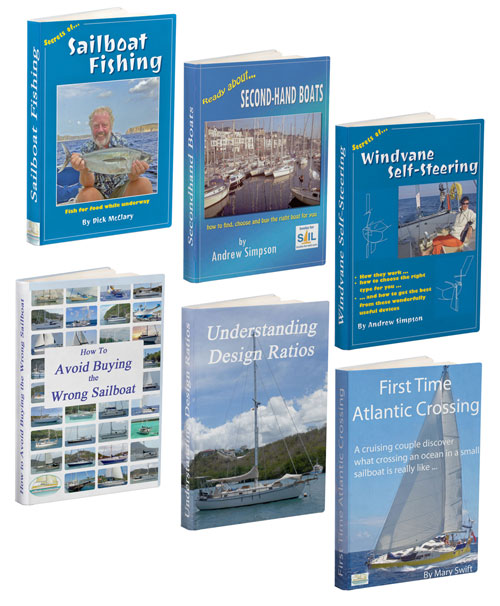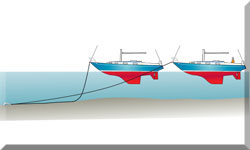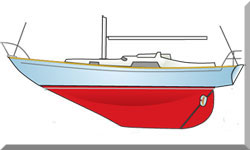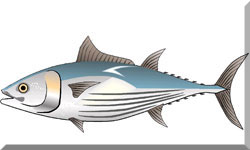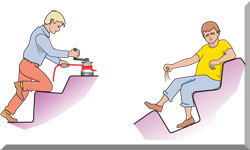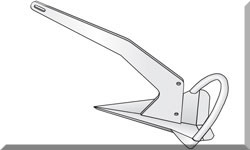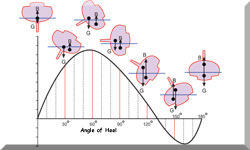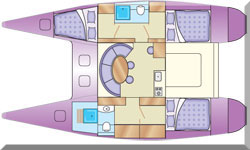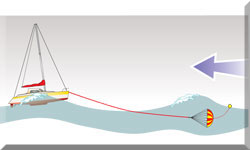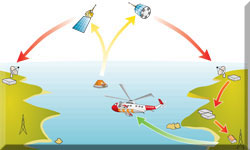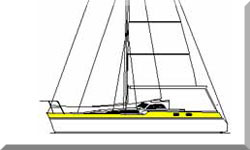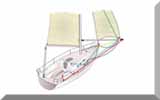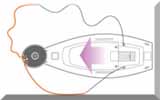Storm Sails: Essential Safety Gear for Offshore Sailors
In a Nutshell...
Storm sails are a vital piece of safety equipment for any boat sailing offshore. They're small, heavily reinforced sails—specifically a storm jib and a storm trysail—designed to maintain control, stability, and steerage in gale-force winds and extreme sea conditions. Having them aboard is a non-negotiable part of responsible offshore preparation, even if you hope you'll never have to use them.
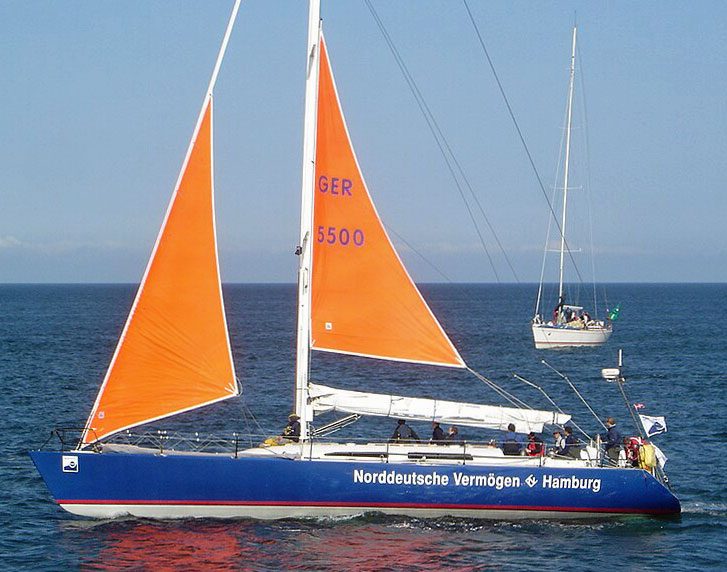 This skipper is wisely trying out his storm sails in benign conditions
By Hein.Mück - Own work, CC BY-SA 3.0, https://commons.wikimedia.org/w/index.php?curid=12653432
This skipper is wisely trying out his storm sails in benign conditions
By Hein.Mück - Own work, CC BY-SA 3.0, https://commons.wikimedia.org/w/index.php?curid=12653432Table of Contents
- What Are Storm Sails & Why Are They So Crucial for Safety?
- How Should I Choose the Right Storm Sails?
- What Is the Difference Between a Storm Trysail & a Regular Mainsail?
- How Do I Set & Use Storm Sails Effectively?
- The Case Against Furling Systems
- Pre-Storm Rigging & Safety Checklist
- Maintenance & Storage for Longevity
- Recommended Sizes of Storm Sails
- In Conclusion: Preparation Is Everything
- Frequently Asked Questions
What Are Storm Sails & Why Are They So Crucial for Safety?
Storm sails are specialised sails built to withstand the punishing loads of severe weather. The two primary types are:
- The storm jib: A very small, rugged foresail you'll use in place of your regular jib or genoa.
- The storm trysail: A small, powerful mainsail replacement that flies independently of the boom.
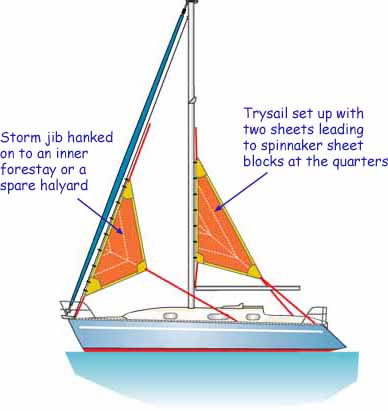
The core reason they're so essential is their ability to maintain control and stability when your regular sails, even when heavily reefed, become dangerous. In gale-force winds, a standard mainsail or jib can cause excessive heeling, uncontrolled rounding up, or even broaching, putting the boat and crew at risk.
My own experience has reinforced this. I've sailed in conditions where a reefed main was still too much sail area, causing the boat to feel unbalanced and difficult to steer. It's in these moments that the small, low-aspect shape of a storm trysail and jib becomes a godsend. They reduce stress on the entire rig—from the mast and standing rigging to the deck fittings—minimising the risk of damage. Most importantly, they allow the vessel to maintain vital forward motion, which is crucial for steerage and preventing the boat from being pushed onto a dangerous lee shore.
Ultimately, carrying a storm jib and trysail isn't just about performance; it's about survival. A well-prepared yacht, hove-to under these sails, can effectively ride out almost any storm.
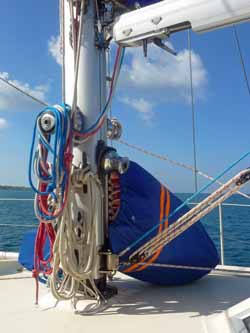 Trysail in its bag, ready for hoisting
Trysail in its bag, ready for hoistingOn my own boat, 'Alacazam', the trysail (with its own sheets attached) has its slides aready in its designated track while stowed in its bag, ready to be un-bagged and hoisted when conditions call for it.
Similarly, the hanked-on staysail has a short wire tack strop attached which allows the storm jib to be hanked on below the staysail, enabling the staysail to be dropped and the sheets and halyard transferred to the storm jib. Then the staysail is un-hanked and stuffed down the forehatch, leaving the storm jib ready to be hoisted.
How Should I Choose the Right Storm Sails?
Selecting the correct storm sails is a critical step in your heavy-weather preparation. You'll need to consider a few factors to ensure they're fit for purpose.
- Size: The sails must be appropriately sized for your boat's displacement and rigging. One that's too large will be overpowered, while one that's too small won’t provide enough power for steerage. The sizes recommended by sailmakers like North Sails (see table below) are a great starting point, but always confirm with a professional sailmaker.
- Material: Opt for a strong, heavyweight sailcloth. Dacron is the traditional and trusted choice for its durability and resistance to tearing. The fabric weight, measured in ounces, should be heavy enough for your boat's size and the anticipated conditions.
- Visibility: In the low visibility of a storm, you want to be seen. Choose sails in bright, high-visibility colours like neon orange or fluorescent yellow. This makes it easier for search and rescue or other vessels to spot you.
- Construction: These sails will be subjected to immense loads, so quality is paramount. Look for robust details, including multiple rows of stitching, reinforced patches at all corners and reef points, and strong hardware.
What Is the Difference Between a Storm Trysail & a Regular Mainsail?
A storm trysail isn't just a smaller version of a mainsail; it's a completely different sail designed for a specific purpose.
The key distinction is that a trysail isn't set on the boom. Instead, it's sheeted directly to the deck or a block on the quarter. This is a crucial safety feature as it allows the boom to be dropped and secured on the deck, eliminating the risk of it swinging dangerously in a violent storm, not to mention significantly lowering the boat's centre of gravity and reducing windage. Furthermore, a trysail is typically set on a dedicated mast track separate from the mainsail track, ensuring it can be hoisted quickly even if the mainsail is stuck or damaged.
How Do I Set & Use Storm Sails Effectively?
Knowing how to deploy and use storm sails effectively is just as important as owning them. Don't wait until a storm hits to practise. A vital part of preparing your boat for offshore sailing is to rig the sails in benign conditions to familiarise yourself with the process.
Setting a Storm Jib
A storm jib is designed to be hanked on to a forestay. On many boats, this will be a removable inner forestay, which is often positioned about one-third of the 'J' measurement (the distance from the mast to the forestay) aft of the main forestay. Cutters, with their existing staysail stays, have a significant advantage here.
- Halyard: Use a dedicated spare jib halyard. Never use the spinnaker halyard as it can chafe dangerously on the forestay.
- Hanks: The storm jib will have hanks (or a luff tape if using a foil) that attach to the forestay. Ensure they're all secured before hoisting.
Setting a Storm Trysail
The trysail must be set on a dedicated mast track to avoid interference with the mainsail's slides.
- Track: Ensure a separate track is available and the sail slides are fed into it, with a pin or stop at the bottom to prevent them from falling out.
- Sheeting: The sail is sheeted to a block on the quarter, not to the end of the boom.
- Boom: The boom should ideally be dropped on deck and secured to minimise windage and the risk of injury.
Once the sails are set, they're often used in conjunction with a heavy-weather tactic called heaving to. This involves balancing the sails in a specific configuration that causes the boat to lie comfortably at an angle to the wind and waves, minimising drift and providing a stable, manageable ride.
The Case Against Furling Systems
While modern furling systems are convenient for day-to-day sailing, they pose significant risks in heavy weather and are no substitute for a dedicated storm jib. A partially furled genoa isn't designed to withstand gale-force loads. The tension from the wind can cause the sail's unsupported leech and clew to flap and flog violently, leading to rapid, catastrophic failure. This is why a storm jib, with its reinforced construction and smaller, low-aspect shape, is the only reliable option for extreme conditions. Using a furling system when the wind is screaming is a common mistake that can easily lead to a damaged sail, a wrapped forestay, or worse.
Pre-Storm Rigging & Safety Checklist
The time to prepare is before the storm, not in the middle of it. A prudent sailor has a checklist for heavy weather.
- Rigging Preparation: Ensure your storm sails are easily accessible. Pre-feed the trysail slides into their dedicated track and secure them with a pin. Confirm that the inner forestay is properly tensioned and ready for the storm jib.
- Personal Safety: Before conditions deteriorate, the entire crew should don appropriate safety gear, including harnesses and tethers. Attach tethers to secure strong points on the deck.
- Boat Preparation: Secure all deck gear, including dinghies, outboard motors, and cockpit cushions. Lock all lockers and close all through-hulls. Double-check that all hatches are dogged down tightly.
- Crew Briefing: Hold a quick meeting to review storm procedures, including sail changes, watch schedules, and communications protocols. Ensure everyone knows their role.
Maintenance & Storage for Longevity
Proper care for your storm sails will ensure they're ready when you need them.
- Post-Use Care: After use, and as soon as conditions allow, rinse the sails with fresh water to remove salt and dirt. Dry them completely before storage to prevent mildew and fabric degradation
- Storage: Fold the sails neatly, avoiding sharp creases. Store them in a well-ventilated, dry location away from direct sunlight. The fabric bags they came in are perfect for this.
- Routine Inspection: Every year, or before a major passage, take them out of their bags and inspect them for wear and tear. Look for fraying on the stitching, small tears, or any signs of hardware corrosion. Small issues are much easier to fix on land than at sea.
Here is a table detailing the recommended sizes for storm jibs and trysails based on boat size and sailcloth weight.
Recommended Sizes of Storm Sails
| Storm Jibs | |||
|---|---|---|---|
| Fabric | Boat Size | Luff | Leech |
| 6oz | 24-28' | 13.1' | 10.1' |
| 7oz | 26-33' | 15.5' | 12.2' |
| 8oz | 31-36' | 17.7' | 13.7' |
| 9oz | 34-38' | 19.9' | 15.8' |
| 9.5oz | 37-50' | 22.51' | 17.88' |
| 9.5oz | 50'+ | 25.44' | 20.0' |
| Storm Trysails | |||
| Fabric | Boat Size | Luff | Leech |
| 8oz | 30-35' | 16.0' | 19.0' | 9oz | 35-38' | 18.0' | 21.5' |
| 9oz | 38-41' | 20.0' | 23.5' |
| 9.5oz | 41-50' | 22.22' | 26.09' |
| 9.5oz | 50'+ | 25.0' | 29.38' |
Conclusion: Preparation Is Everything
A storm jib and trysail are not sails you'll use often, but when you do need them, you'll need them desperately. My personal experience has taught me that the peace of mind that comes from knowing you're prepared is priceless. To learn more about the different types of sails and how they work together, consider our comprehensive Guide to Sailboat Sails: Powering Your Passage. With a careful eye on the weather forecast and all your gear ready, you can face the ocean with confidence.
This article was written by Dick McClary, RYA Yachtmaster and author of the RYA publications 'Offshore Sailing' and 'Fishing Afloat', member of The Yachting Journalists Association (YJA), and erstwhile member of the Ocean Cruising Club (OCC).
Frequently Asked Questions
What are storm sails used for?
What are storm sails used for?
Storm sails are used to provide safe, manageable power and control in extreme weather conditions, such as gale-force winds and rough seas, when regular sails are too large or dangerous.
Is a storm trysail flown with the boom?
Is a storm trysail flown with the boom?
No, a storm trysail is designed to be flown without the boom. It's sheeted directly to the deck, which allows the boom to be secured and eliminates the risk of it swinging violently.
Can I use my genoa furled down instead of a storm jib?
Can I use my genoa furled down instead of a storm jib?
It's not recommended. While many sailors do this, a partially furled genoa is prone to damage, as the tight wind loads can rip the unsupported clew and leech of the sail. A dedicated storm jib is made with much stronger sailcloth and construction to withstand these extreme forces.
Do I need a special mast track for a storm trysail?
Do I need a special mast track for a storm trysail?
While some sailors may use the same track, it's highly recommended to have a dedicated mast track for a trysail. This prevents a potential jam or conflict with your mainsail slides and ensures the trysail can be hoisted quickly and safely.
What colour should my storm sails be?
What colour should my storm sails be?
Storm sails should be a highly visible colour like orange or yellow. This improves safety by making your boat easier to spot in the poor visibility of a storm.
Resources Used & Verification
The content in this article has been thoroughly researched and verified against multiple sources, including my personal experience as an RYA Offshore Yachtmaster and insights from professional sailmakers. The sail size recommendations are based on established industry standards.
- North Sails: The sail size recommendations and information on sail construction are informed by industry-leading sailmaking companies like North Sails: https://www.northsails.com/en-uk
- Sail Care & Maintenance: For more in-depth information on extending the life of your sails, you can refer to our dedicated article, [Sail Care & Maintenance: A Guide to Extending Your Sail's Life].
- Sail-World.com: Information on the history and use of storm sails, as well as racing specifications, was referenced from articles on Sail-World.com: https://www.sail-world.com
- Practical Boat Owner: The article's content on heavy weather sailing and general sail care was cross-referenced with articles from Practical Boat Owner: https://www.pbo.co.uk
Recent Articles
-
Jonmeri 40: Cruising Specs, Performance Ratios & Review
Nov 30, 25 09:08 AM
An in-depth, expert review of the Jonmeri 40 sailboat. Analyse design philosophy, D/L & CSF ratios, cruising suitability, and common ownership concerns for this Finnish-built, high-performance ocean c… -
Alajuela 48: Review, Specs, & Performance Ratios for Offshore Cruisers
Nov 29, 25 12:46 PM
Detailed analysis of the Alajuela 48 full-keel cruiser, including designer Robert Perry's philosophy, comprehensive specifications, key design ratios (SA/D, D/L, CSF), and suitability for experienced… -
Alajuela 48 For Sale: Robust Blue Water Cruiser & Ocean Voyager
Nov 29, 25 10:27 AM
Exceptional Alajuela 48 blue water cruiser for sale. Designed by Raymond Richards, this GRP ocean yacht offers legendary build quality & comfort for extended voyages. View specifications, photos, & co…
